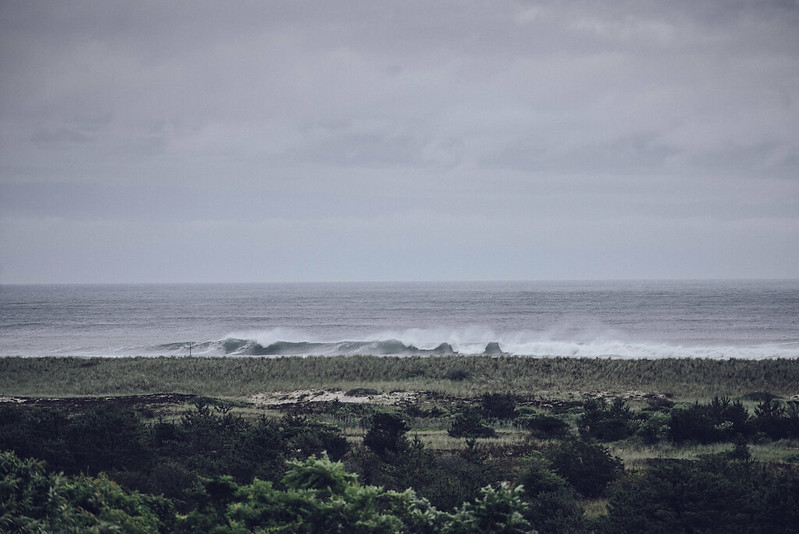Excerpt:
Next to some of the priciest real estate in the world, the Shinnecock Nation refuses to merely retreat from its vulnerable shoreline.
There’s a modest hill in Seneca Bowen’s yard that gently slopes upward, away from an inlet that leads into southeastern Long Island’s Shinnecock Bay and eventually into the Atlantic Ocean. In 2012, when Hurricane Sandy ripped through Long Island, those few feet of elevation were the only thing standing between the flood waters and Bowen’s house.
On a recent August afternoon, Bowen and I walked around his land as he recalled how Sandy wiped away the small beach at the edge of the property, where Bowen grew up swimming and fishing. Bowen showed me exactly how high the water came that year: 100 yards past the usual high tide mark. In the years since, that beach has become a grassy wetland that floods regularly, encroaching ominously on his home.
Bowen, who is 36, lives on the Shinnecock Nation reservation on the eastern end of Long Island, where his community is facing a dire situation.
About half of the Shinnecock Nation’s 1,600 tribal citizens live on an 800-acre reservation that includes 3,000 feet of shoreline on Shinnecock Bay. Of the roughly 250 homes within Shinnecock territory, around 50 are on the coast and in immediate danger from rising sea levels and increasing flooding. Powerful storm surges, which are also becoming more frequent, make all of this even worse.
“We’re running out of space,” Bowen, who is the treasurer of the Shinnecock Nation Council of Trustees, told me. “Our population is going up. We haven’t been able to acquire more land.”
But water isn’t the only thing hemming the Shinnecock in. In every direction, they are surrounded by the multimillion-dollar homes of Southampton, sometimes mere feet from the border of the Shinnecock Nation. As Bowen stood facing the water at the edge of his land, he pointed out the Southampton Yacht Club, a private club directly across the water from his home. “We’re surrounded by some of the most wealthy people in the country and then you have us sitting here struggling to just make ends meet,” Bowen said. “I mean, hell, I’m a council member and I live paycheck to paycheck.”
For nearly 400 years, since Southampton was settled in 1640, the Shinnecock have fought to stay where they are. Now, climate change is making the fight to stay on their homeland even more difficult as sea levels rise and storms grow stronger and more frequent. In the past few years, the Shinnecock have employed a combination of strategies to protect themselves against rising seas, like planting beach grass to strengthen dunes and developing oyster reefs to blunt tidal energy.
But unless the pace of climate change can be slowed, these solutions will not be enough to save Shinnecock lands, which currently represent only a fraction of their ancestral territory. The tribe’s 2013 climate adaptation plan predicted that nearly half of the Shinnecock reservation will flood after a major storm in 2050. Forecasts have only gotten worse since then.
“At some point — I don’t want to say in the near future, but certainly by the time my kids are old enough to be in charge — half the rez is going to be underwater,” Bowen said. “We obviously don’t want to leave our homeland, but at some point we’ll probably be forced to do that…”
Additional Reading:
Kerry Goleski
A Case for Southampton Residents to Look Toward the Shinnecock Indian Nation on Protecting the Water Bodies and Coastline
Anuradha Varanasi
The Tribe That Brought a Damaged Shoreline Back to Life









